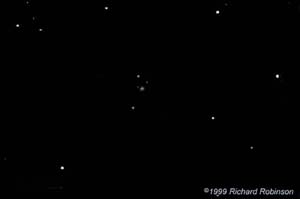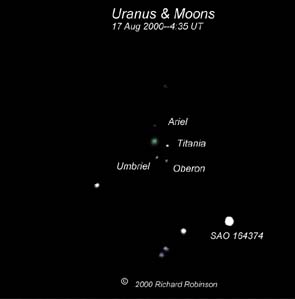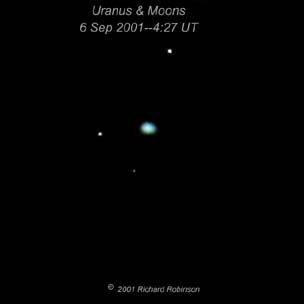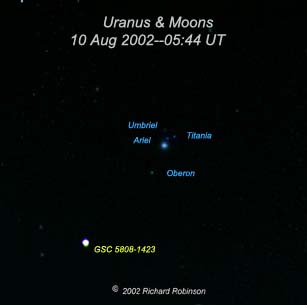 |
Scope: 8" LX 200 SCT |
| MX - 5C CCD | |
|
This
image of Uranus was taken on 3 Aug 99. Uranus is the "star" in the
center of the image. Five of it's moons can be seen in the larger
image.
Click here to download a PC DOS program (47K zipped file) to show the positions of the moons of Uranus This program is freeware.
|
Focal Ratio: f10 |
| Exposure: 2 sec for planet, 120 sec for moons | |
 |
Scope: 8" LX 200 SCT |
| MX - 5C CCD & STAR 2000 | |
| Focal Ratio: f10 | |
| Exposure: 2 sec for planet, 120 sec for moons | |
 This image was made as I was preparing for the possible occultation of a magnitude 7.2 star by the moon Titiania. Click here for an animation and my attempt to image the occultation |
Scope: 8" LX 200 SCT |
| MX - 5C CCD & STAR 2000 | |
| Focal Ratio: f30 | |
| Exposure: 3 sec for planet, 20 min for moons (two 10 minute autoguided exposures) | |
 |
Scope: 8" LX 200 SCT |
| MX - 5C CCD & STAR 2000 | |
| Focal Ratio: f10 | |
| Exposure: 2 sec for planet, 5 min for moons | |
|
|
|